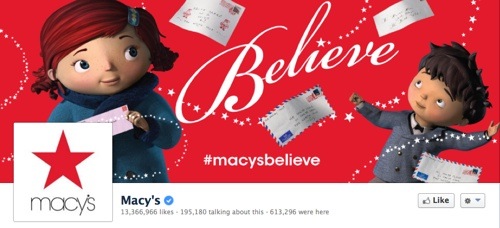Did you know that 90% of U.S. consumers say they would switch to a brand associated with a cause, given comparable price and quality? In other words, even beyond the positive implications on our communities and our world, it’s also good for the bottom line.
This is one of many reasons that an increasing number of businesses are finding ways, big and small, to incorporate social and environmental causes into their business models.
One effective and relatively uncomplicated way for businesses to do so is through cause marketing, or a marketing campaign geared toward a social or environmental cause. Such campaigns or initiatives can be run as a collaborative effort between a for-profit business and a nonprofit organization, or by a business on its own. And they can have a variety of goals, from fundraising, to raising awareness, to advocacy.
If your business is interested in developing a cause marketing campaign, here are our tips for getting started:
Find a Cause That’s Aligned With Your Values
As you might expect, the most important aspect of a cause marketing campaign is determining which cause you’ll be supporting. As with all CSR-related initiatives, it’s crucial that you align with your brand’s identity and core values. If you don’t approach your campaign from this angle, it’s likely to come across as insincere or irrelevant, which makes it difficult for consumers to connect and engage. When the connection between your values and your campaign makes sense and feels genuine, it will be easier to market, resonate with your audience, and achieve your intended impact.
A great example of alignment in cause marketing is Reebok’s partnership with the Avon 39 Walk to End Breast Cancer. This annual walk is meant to increase awareness about the signs and symptoms of breast cancer, educate people about the importance of early detection, and raise money for cancer research, and an athletic event with a cause is a natural opportunity for an athletic shoe company to get involved. With Reebok’s support, the campaign has been able to raise over $500 million for breast cancer prevention and research.
Find the Right Partner(s)
Once you’ve decided on the cause you want to support, the next step is choosing a potential partner(s). Here’s what you should look for:
- Their mission(s) align(s) with your cause marketing goals
- They are able to clearly measure and demonstrate the positive outcome of their programs
- They have the internal capacity to work with you on a campaign (i.e. they have at least one staff member with bandwidth and strong interest)
- They have a built-in audience you can activate in addition to your own
Remember, the best partnerships create mutual benefit for everyone involved, thereby incentivizing strong participation on both sides.
Get Creative with Your Plans
These days, there are a number of social responsibility initiatives and cause marketing campaigns out there. While this is a great thing, you’ll need to get creative to get your message out in a way that is attention grabbing, genuine, and impactful. Simply aligning yourself with a nonprofit partner and talking about it online won’t be enough – you need to think outside of the box and be smart with your timing, designs, and messaging.
For example, in 2011, Patagonia launched a cause marketing campaign around Black Friday and Cyber Monday called the Common Threads Initiative, which called on consumers to buy less – including less of Patagonia’s apparel. The campaign encouraged conscious consumption by calling out the environmental cost of producing every item we purchase, while simultaneously selling sewing kits for clothing repair. It was risky and innovative enough to garner a great deal of attention while still achieving its purpose of touting the durability of Patagonia clothing.
Use Your Available Assets
To run an effective campaign, you’ll also want to be sure you’re leveraging all available assets – both your own as well as those of your partners.
One great example is Dunkin’ Donuts’ annual Cop on a Rooftop campaign. Each year in Chicago, Dunkin’ Donuts partners with Illinois Law Enforcement to raise money for Special Olympics Illinois. To promote the campaign, Dunkin’ Donuts utilizes its brick-and-mortar Chicago stores as well as the manpower of Illinois Law Enforcement. Law enforcement officers stand on the rooftops of participating locations and encourage patrons to make a donation to the Special Olympics, offering prizes to those who donate certain amounts. Since its inception 13 years ago, the campaign has raised over $2.3 million.
Have you seen or participated in a particularly unique or effective cause marketing campaign? Tell us about it – here’s how:
- Connect on social: Twitter, Facebook, Instagram, LinkedIn
- Send us an email
- Post a comment below










































